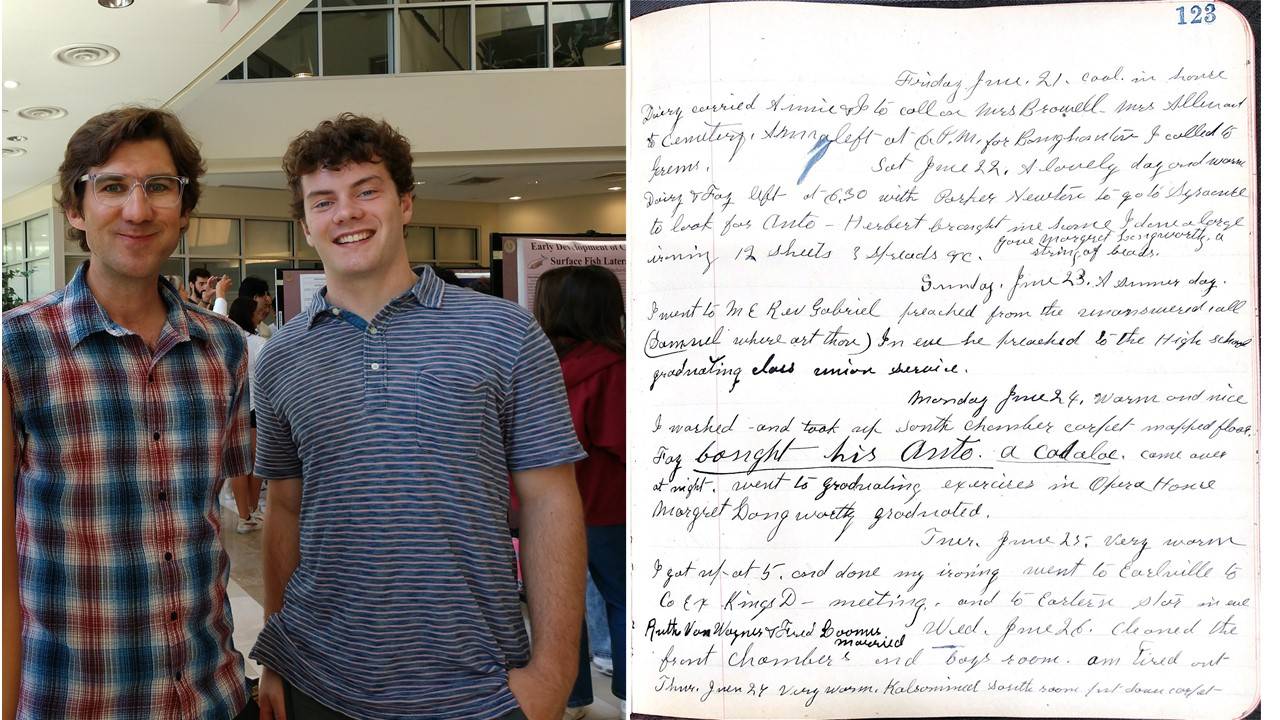Weather effects can be found in many places: scientific temperature records, pollen surveys, and — based on summer research by Thomas Butler ’24 — in local farm diaries.
As Thomas Butler '24 writes:
Advised by Professor William Meyer this summer, I researched weather valuation, specifically how people’s ideas about weather have changed (or remained constant) after the automobile was popularized in rural upstate New York. My question sought to examine if valuation of weather is unchanging, or if historical and technological developments influence societal attitudes.
I conducted the majority of my research using the Rhoades family diaries, housed in Colgate’s Special Collections and University Archives, and various other historical documents. Before the early 20th century, local travel was done either on foot or by horse and carriage (or horse and sleigh, when snow permitted). If citizens wished to travel outside their local communities, they used railways.
One common misconception regarding pre-automobile winters in upstate New York is that the winter was the best season for travel because the cold could cause the unsurfaced, muddy roads to freeze and provide a hard and often low-friction surface for sleighing. However, as locals know, temperatures plunge below zero frequently during the winter, making outside activities uncomfortable or nearly impossible. In addition to this, rain and inconsistent winter temperatures also complicate travel and contribute to poor road conditions.
The Rhoades family, which purchased its first automobile in 1912, mainly resided on a large farm near Hubbardsville, and from 1843 to 1936, at least one member of the family kept a diary. Both male and female diarists noted the weather nearly every day, and otherwise gave a fairly detailed composite of daily life for the average farming family.
Thus far, my research has generated some preliminary conclusions. Weather valuation seems to vary individually by gender, age, proximate physical geography, as well as other factors. Although I have uncovered much throughout my preliminary research, more digging into the topic should be done in order to further investigate and expand upon my conclusions. If intriguing results emerge, I hope to use this research as a starting point for a senior honors thesis in environmental geography.
Many thanks to Morgan Elmore in Colgate’s special collections for her help.
